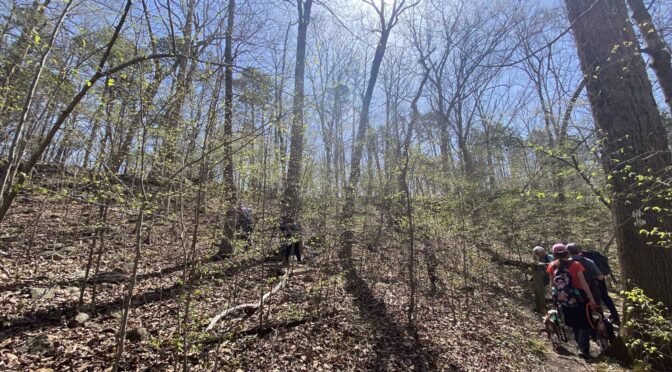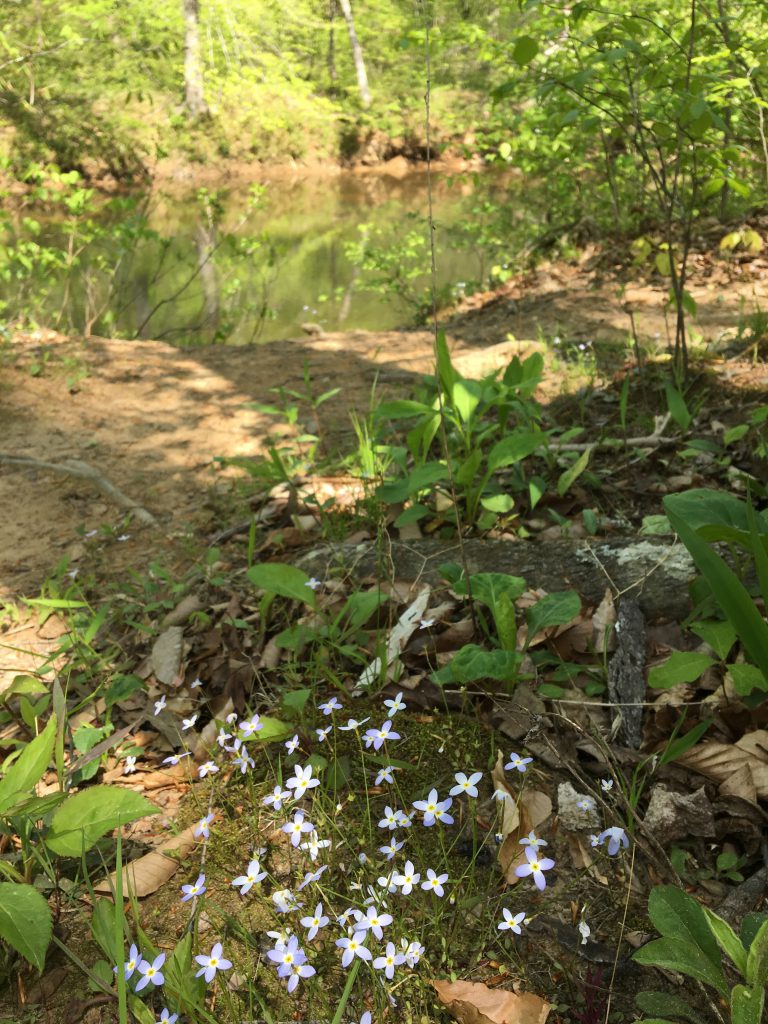The Spring wildflower bloom has been going on for about a month and a half now. It kicked off with the maroon and yellow fingerling petals of the trout lily, the delicate white (and sometimes pink or purple) blossom of the spring beauty. Those have pretty much passed, and now we’re on to the bluets, ladyslippers, Dutchman’s breeches and more. The point? The show won’t last much longer, which is why today we’re recommending wildflower hikes for the coming weekend.
Tag Archives: spring wildflowers
Pitchers, Catchers and spring wildflowers
When I was growing up in Colorado, my countdown to spring began when pitchers and catchers reported for training. It wasn’t warm enough to play baseball where I was, but it would be in six weeks or so. Spring was on the horizon.
Today, I use a different standard to count down to spring: the appearance of the first trout lily.
Spring wildflowers, spring bees
New Hope Creek was at its burbling best: the hardwoods nearly leafed out, the air warm but not summer warm, the wildflowers in abundance: spring beauties, bluets, chickweed, violets, periwinkle and a particularly stunning dwarf iris.
My hikers will love this! I thought, thinking ahead to the Sunday GetHiking! trip I was scouting. Then I heard a distinctive hum, with more volume than I was accustomed to. I looked down to see a carpet of bees swarming the trail, darting from this violet to that. I scampered 20 feet down the narrow path, skedaddling before my hairy legs became an annoyance.
Crap! I said to myself. Moments later, I encountered a second swarm, then a third and a fourth.
Before leading a hike, I like to scout the trail, especially one I haven’t hiked in a few months. Usually, I’m looking for downed trees, swollen creeks, anything that might pose a problem. That Thursday, I found a seasonal deterrent: bees.
It’s true, confirmed Rebecca Irwin, associate professor of zoology at N.C. State University, bees are especially active right now.
“They’re just up from hibernating and out collecting pollen and nectar,” Irwin said. “They’re waking up and need food.”
Familiar with the phenomenon of waking up hungry, I asked if they might be particularly aggressive.
“They don’t want to sting you,” assured Irwin, they want nectar, to feed their larva. The only danger is if you get in their way.”
I was glad that I’d elected to give the bees wide berth. An easy decision, considering I’m an EpiPen packer known to swell like the Michelin Man when we tussle. I am not alone.
According to the Centers for Disease Control and Prevention, about 2 million Americans are allergic to insect stings. Further, states the CDC, bees are the deadliest non-human critters in America, killing about 100 Americans annually. With that many bees on the trail and those odds, and with my own allergy to bees, I was glad I’d scouted the trail: we would hike elsewhere.
Note: This applies only to omnivorous bees. Wasps and hornets are omnivorous and are more motivated to sting for a meal. Avoid at all costs.
If you are allergic to bee stings, let your hike leader or hiking companions know. Carry an antihistamine or an EpiPen, as prescribed by your physician. Don’t hike alone.
If you or someone you’re hiking with gets stung on a hike, WebMd offers the following advice:


